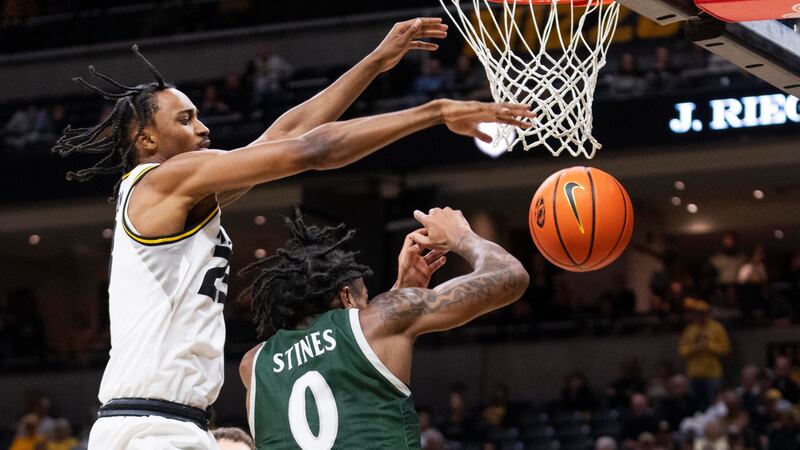Basketball Analytics: Defensive Metrics

Let’s Review Key Defensive Basketball Metrics that will help you make your prediction.
Fans get excited about offensive production and media hypes up offense to no end. Offense is the dessert and defense is the vegetables when it comes to sports. Everyone cannot get enough offense and nobody wants to dig into defense. Defense is critical and understanding certain defensive metrics in basketball will help you make a more informed prediction or wager for a particular game.
Let’s start with figures that are actually not helpful or indicative of anything.
There are two of these figure types:
- Per Game Metrics (i.e. Team A allows 93.3 points per game, Player A has 7.3 rebounds per game)
- Total Metrics (i.e. Player A has 43 steals this season, Team B has 200 blocks this season)
These metrics are not useful because not all games are played at the same pace. There needs to be a way to compare and contrast players in a way that is not shaped by pace of play. Also, these stats do not tell you the true impact a player has on the floor or how disruptive a team’s style of play is for opponents.
Now onto more effective measurements that tell a better story on the defensive end so that you can make more informed decisions.
Defensive Rebounding Rate
There are two different formulas for this rate. One is for players and the other is for teams.
Defensive rebounding rate for players is helpful with Daily Fantasy, prop bets or if a particular player is unable to play in a game. A player’s absence would alter a team’s defensive rebounding capabilities and it may mean second chance scoring opportunities for an opponent.
Defensive rebounding rate for teams is helpful to know because it indicates whether the team is susceptible to second chance scoring opportunities. More scoring opportunities for an opponent usually results in more points for them as well.
Team Defensive Rebounding Rate = 100* (Def. Rebounds/(Def. Rebounds + Opponent Off. Rebounds))
Forced Turnover Rate
There is a forced turnover rate, which is helpful to know, but it is not the best way to understand the impact of a team on defense. There are two types of turnovers: Dead Ball Turnovers and Live Ball Turnovers. The Live Ball Turnover rate is presented as the Steals Rate, but there’s no Dead Ball Turnover Rate. Dead Ball Turnovers include bad passes out of bounds, offensive fouls, shot clock violations, three second violations, traveling, double-dribbles, stepping out of bounds, five second violations, and any time a ball goes off an offensive player with possession of the ball out of bounds.
Why is it important to distinguish between the two? After all, they are both turnovers.
Live Ball Turnovers lead to transition offense and higher percentage shot opportunities. There are likely to be advantage situations on offense that can be seized.
Dead Ball Turnovers result in a change of possession and then having to face a set half-court defense or even a full court or 3/4 court press because the ball must be inbounded.
The formulas:
- Turnover Rate = Turnovers Forced / Opponent Possessions
- Steals Rate = Steals / Opponent Possessions
- Dead Ball Turnover Rate = (Turnovers Forced – Steals) / Opponent Possessions
- Offensive Fouls Forced Rate = Offensive Fouls / Opponent Possessions
Teams that force high amounts of turnovers are keeping opponents from getting shot attempts. Teams with high steals rates are getting more transition offense opportunities.
Teams with high forced turnover rates and yielding high True Shooting and Effective Field Goal rates tend to gamble more on defense.
Measuring out the team’s physicality and effectiveness of their ability to force live ball turnovers without fouling by doing this.
Stealth Rate = Steals/Fouls Committed
Check offensive fouls forced and dead ball turnover rate, if a team is a strong offensive dribble driving team as indicated by their shot distribution and assist rate at the rim, then the likelihood is high that the dribble drive can be neutralized early in a game against a team with a high dead ball turnover rate and offensive fouls forced rate. This could have an impact on the Total for a particular time period, whether it be a First Half or Quarter.
Defensive Efficiency
The lower Defensive Efficiency is, the better. It is an efficiency rate that speaks to how many points per 100 possessions a team would yield. It is a tempo-free metric that allows for apples-to-apples comparisons.
A few caveats…
Keep in mind, that it could be impacted negatively by injuries, so keep in mind the individual player’s Defensive Rating as this figure may require some form of an adjustment.
Another factor is level of competition. In College Basketball, comparing the defensive performance of a team against Gonzaga, Villanova or Duke is radically different from a team facing South Carolina State, UC-Davis or UMass-Lowell.
Ken Pomeroy’s Adjusted Offense Efficiency and Adjusted Defense Efficiency take into account the second issue with Defensive and Offensive Efficiency in College Basketball. The first matter will require you to make your own adjustments based on the news of a player being out or returning to a team.